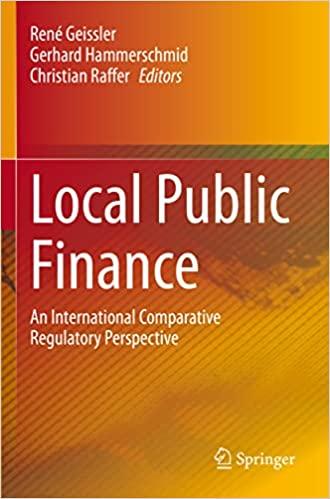Question
For question, 11 The interest rate on a new issue of callable bonds is likely to be equal to that on a similar new issue
For question, 11 The interest rate on a new issue of callable bonds is likely to be equal to that on a similar new issue of noncallable bonds, 13 At $500 ($100 annual interest payments x 5 years to maturity), 18 Investors should not expect to "beat the market.", 22 Private contributions all of which I got wrong here are the questions.
Question 11. Question : Which of the following statements is most correct? Student Answer: The interest rate on a new issue of callable bonds is likely to be equal to that on a similar new issue of noncallable bonds. There is no difference in risk to the investor between similar callable and noncallable bonds. Noncallable bonds are riskier to the investor, while callable bonds are riskier to the issuer. The interest rate on a new issue of noncallable bonds is likely to exceed that on a similar new issue of callable bonds. The interest rate on a new issue of callable bonds is likely to exceed that on a similar new issue of noncallable bonds. Question 13. Question : Assume that an outstanding seven-year bond has $1,000 par value, a coupon rate of 10 percent, and five years remaining to maturity. If the required rate of return on similar bonds of equal risk is 5 percent, the bond will sell at which of the following? Student Answer: At $500 ($100 annual interest payments x 5 years to maturity) The bond cannot be sold again because it is already outstanding. A discount A premium At par value Question 18. Question : Which of the following statements about efficient markets is(are) most correct? Student Answer: In the long run, investors should expect to earn only a return commensurate with the risk assumed. All of the above statements are correct. Investors should not expect to "beat the market." Not all markets are efficient. For example, the market for real assets is not efficient. Current prices reflect all publicly available information. Question 22. Question : Which of the following methods for raising equity capital is not available to not-for-profit corporations? Student Answer: Government grants Private contributions Retained earnings Religious organizations Common stock sales Question 23. Question : Investor-owned (for-profit) firms receive the proceeds from stock sales in which of the following markets? Student Answer: IPO market Secondary market Answers (a) and (b) Answers (a), (b), and (c) Primary market
Step by Step Solution
There are 3 Steps involved in it
Step: 1

Get Instant Access to Expert-Tailored Solutions
See step-by-step solutions with expert insights and AI powered tools for academic success
Step: 2

Step: 3

Ace Your Homework with AI
Get the answers you need in no time with our AI-driven, step-by-step assistance
Get Started


